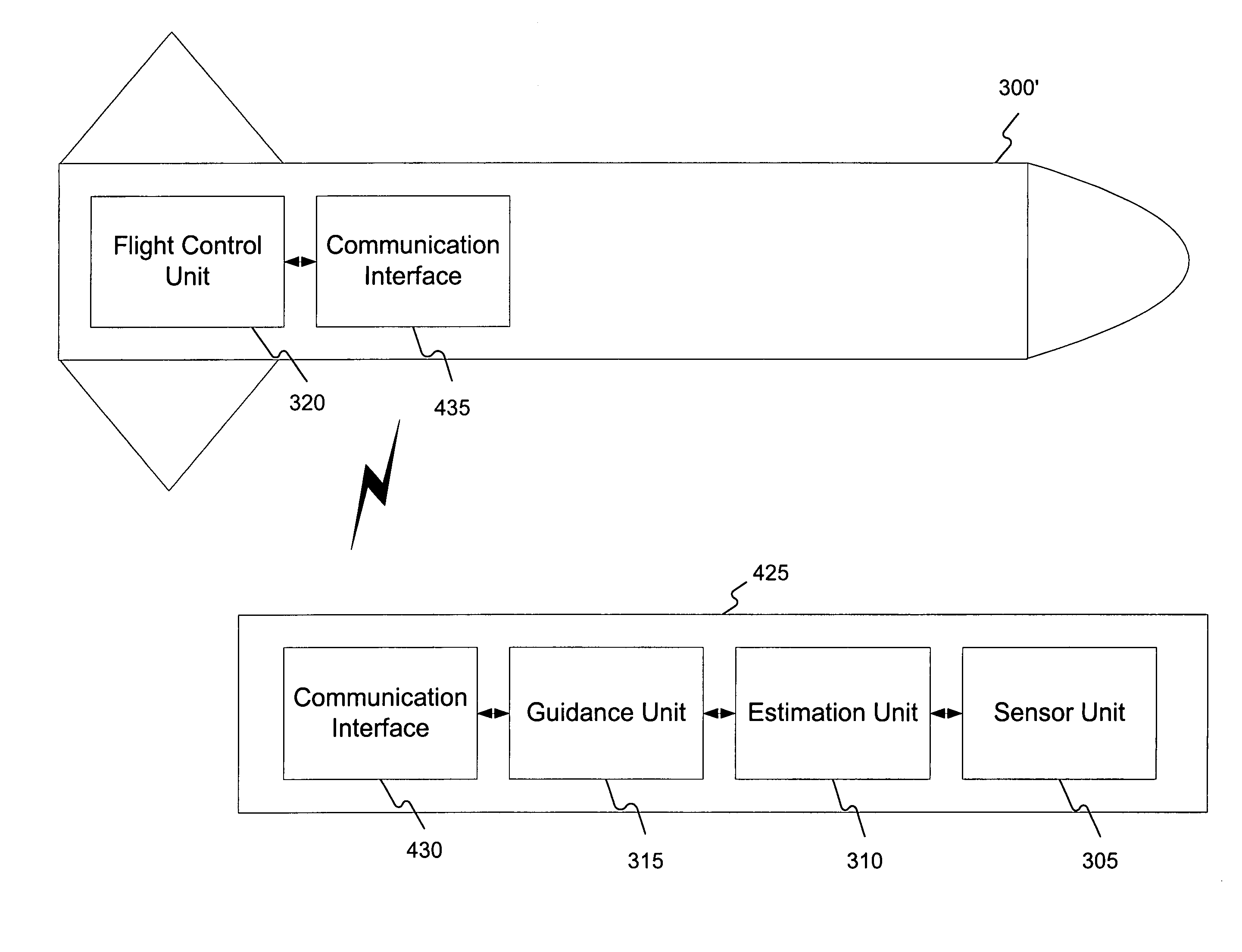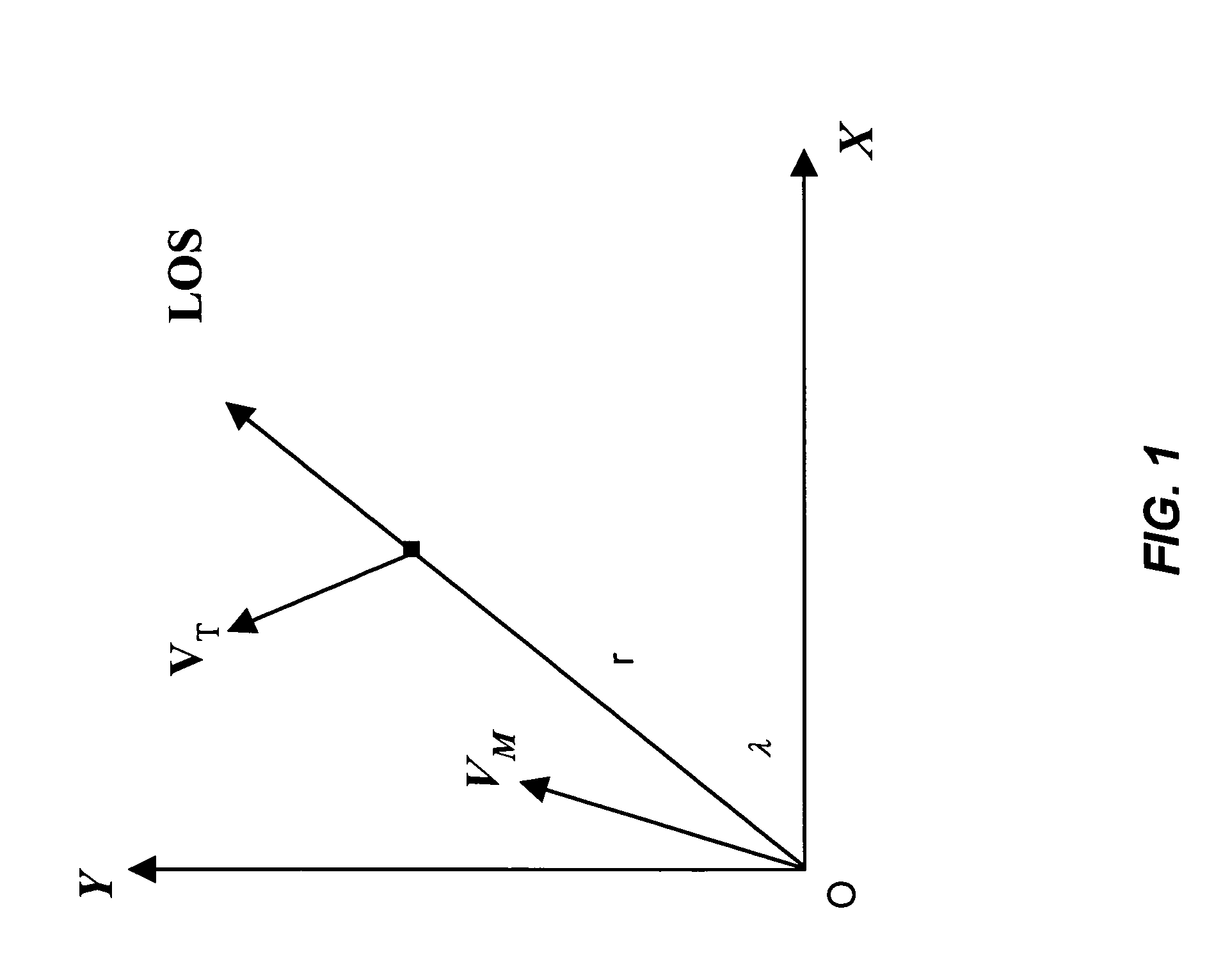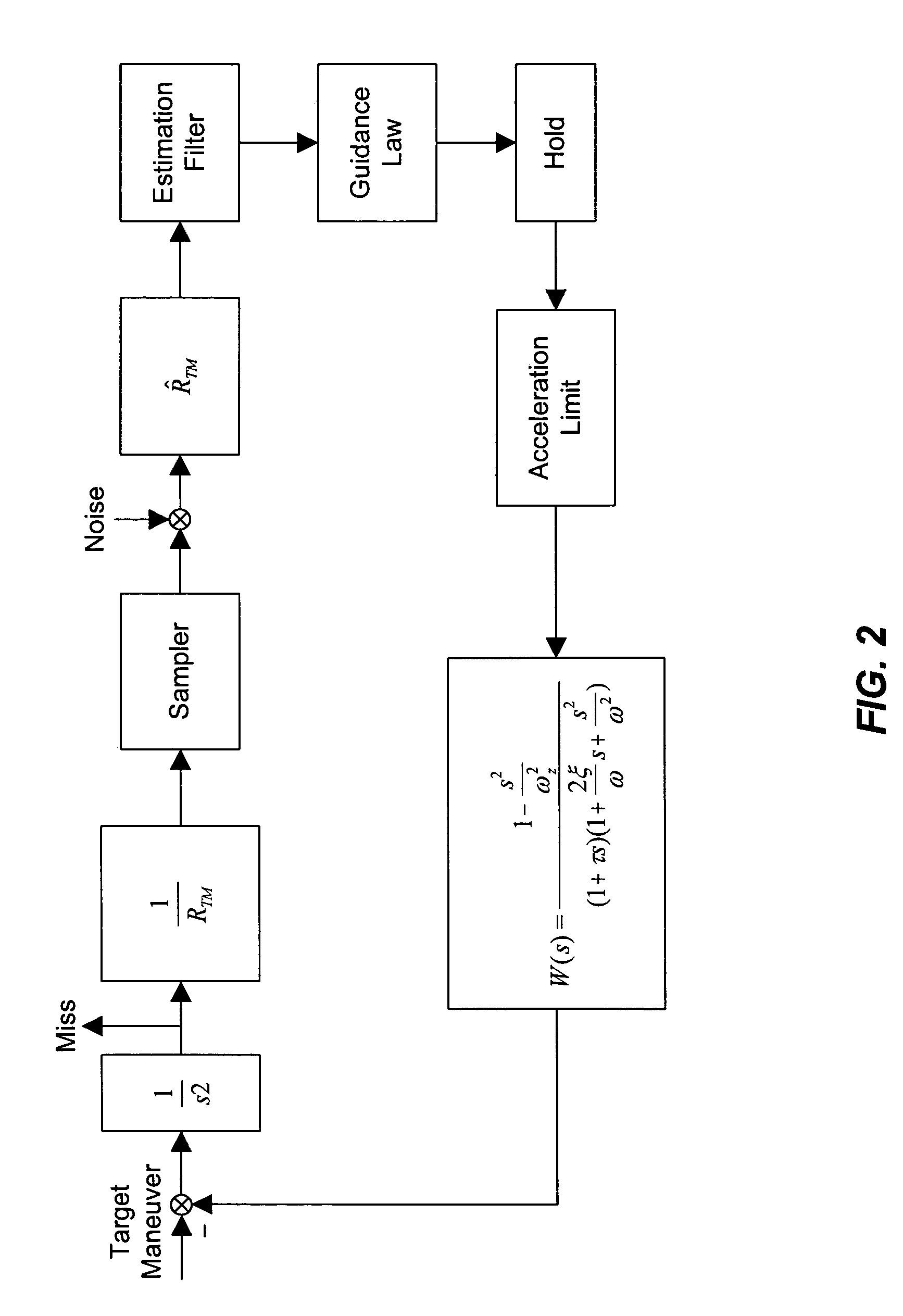Methods and systems for guiding an object to a target using an improved guidance law
a technology of homing guidance and guidance law, applied in the direction of process and machine control, using reradiation, instruments, etc., can solve the problems of not being able to implement guidance laws in practice, not being able to apply one or more of these assumptions in all situations, and giving even worse results. , to achieve the effect of improving the accuracy of navigation
- Summary
- Abstract
- Description
- Claims
- Application Information
AI Technical Summary
Benefits of technology
Problems solved by technology
Method used
Image
Examples
operational examples
[0071]FIG. 2 shows a linearized planar missile guidance model used for the above operational examples as described, for example, in R. T. Yanushevsky, “New Multidimensional Midcourse and Homing Guidance Laws and Their Comparison with the PN and Kappa Guidance Laws,” TSC-W242-001 / rty, June 2003; R. T. Yanushevsky and W. J. Boord, “A New Approach to Guidance Law Design,” AIAA Guidance, Navigation, and Control Conference, Austin, 2003, AIAA-2003-4770.
[0072]Here RTM is the range r between a missile and a target and {circumflex over (R)}TM is its estimate. The flight control dynamics is presented by a third order transfer function as follows with damping ζ and natural frequency ω, the flight control system time constant τ, and the right-half plane zero ωz:
[0073]W(s)=1-s2ωz2(1+τs)(1+2ξωs+s2ω2)
Four guidance laws are considered: i) proportional navigation; ii) augmented proportional navigation; iii) nonlinear guidance as discussed above, without measurements of target acceleration; an...
PUM
 Login to View More
Login to View More Abstract
Description
Claims
Application Information
 Login to View More
Login to View More - R&D
- Intellectual Property
- Life Sciences
- Materials
- Tech Scout
- Unparalleled Data Quality
- Higher Quality Content
- 60% Fewer Hallucinations
Browse by: Latest US Patents, China's latest patents, Technical Efficacy Thesaurus, Application Domain, Technology Topic, Popular Technical Reports.
© 2025 PatSnap. All rights reserved.Legal|Privacy policy|Modern Slavery Act Transparency Statement|Sitemap|About US| Contact US: help@patsnap.com



